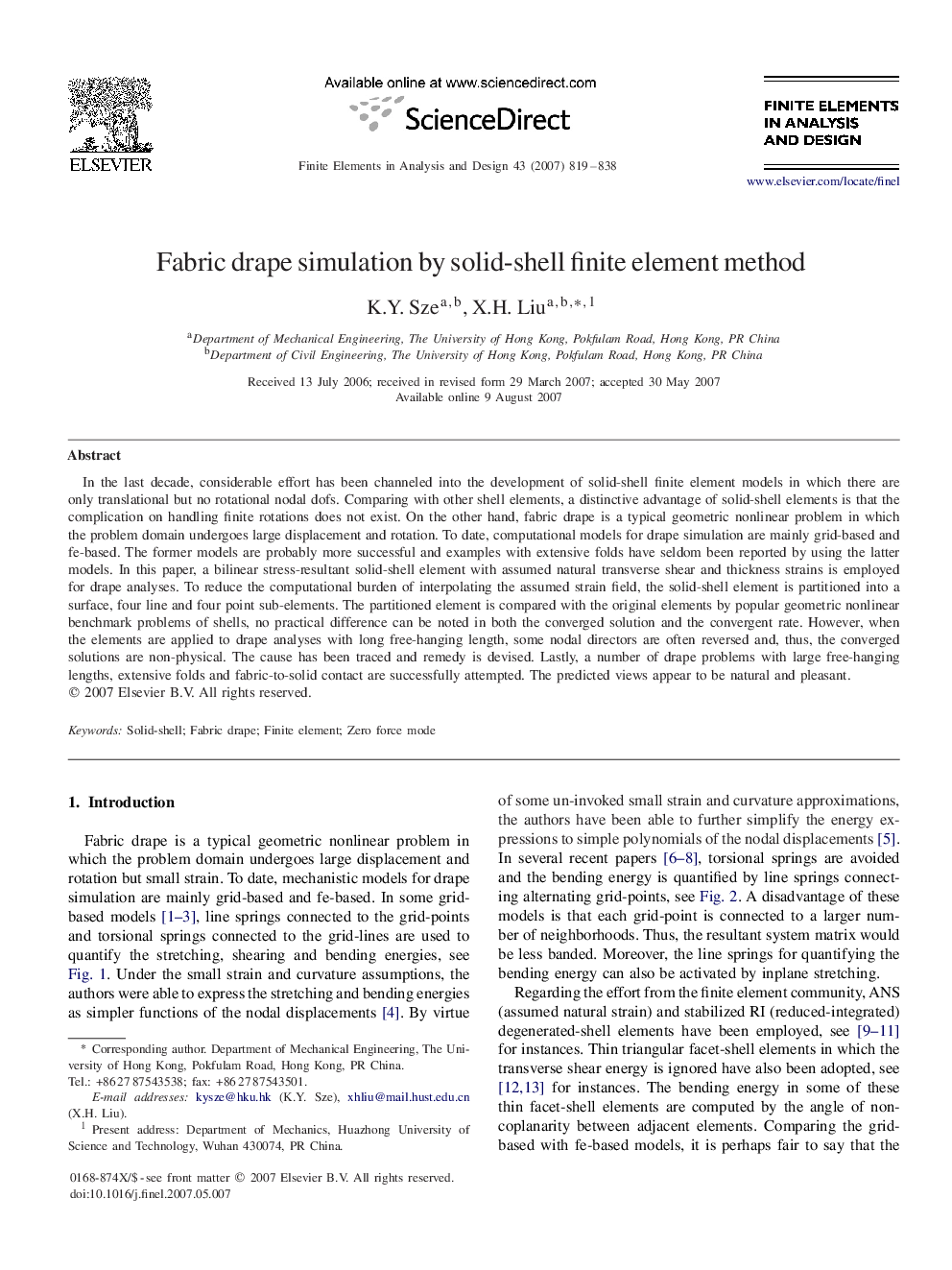| کد مقاله | کد نشریه | سال انتشار | مقاله انگلیسی | نسخه تمام متن |
|---|---|---|---|---|
| 514346 | 866730 | 2007 | 20 صفحه PDF | دانلود رایگان |

In the last decade, considerable effort has been channeled into the development of solid-shell finite element models in which there are only translational but no rotational nodal dofs. Comparing with other shell elements, a distinctive advantage of solid-shell elements is that the complication on handling finite rotations does not exist. On the other hand, fabric drape is a typical geometric nonlinear problem in which the problem domain undergoes large displacement and rotation. To date, computational models for drape simulation are mainly grid-based and fe-based. The former models are probably more successful and examples with extensive folds have seldom been reported by using the latter models. In this paper, a bilinear stress-resultant solid-shell element with assumed natural transverse shear and thickness strains is employed for drape analyses. To reduce the computational burden of interpolating the assumed strain field, the solid-shell element is partitioned into a surface, four line and four point sub-elements. The partitioned element is compared with the original elements by popular geometric nonlinear benchmark problems of shells, no practical difference can be noted in both the converged solution and the convergent rate. However, when the elements are applied to drape analyses with long free-hanging length, some nodal directors are often reversed and, thus, the converged solutions are non-physical. The cause has been traced and remedy is devised. Lastly, a number of drape problems with large free-hanging lengths, extensive folds and fabric-to-solid contact are successfully attempted. The predicted views appear to be natural and pleasant.
Journal: Finite Elements in Analysis and Design - Volume 43, Issues 11–12, August 2007, Pages 819–838